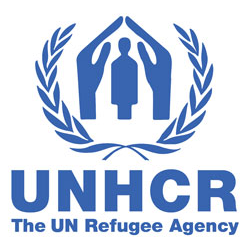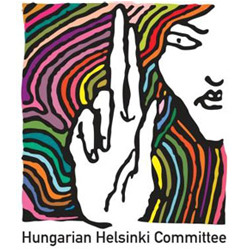Main Debates
- Must there be a decision on inclusion before exclusion?
- How should terrorism be defined?
- Does terrorism fall under the notion of a non-political crime, Art. 1F(b), or a crime contrary to the purposes of the United Nations, Art. 1F(c)?
- What degree of involvement and/or commitment to the goals of the group warrants exclusion?
- Should there be a balancing of the gravity of the crime and the gravity of the feared persecution?
- What role should international criminal law play in interpreting Article 1F?
Main Points
- Expanding content of war crimes and crimes against humanity
- Diminished culpability: superior orders and child soldiers
- Expanding application of the serious non-political crime clause
Treaties
- Agreement for the Prosecution and Punishment of the Major War Criminals of the European Axis, and Charter of the International Military Tribunal, 8 August 1945, 82 U.N.T.S. 280, Art. 6.
- UNHCR, Convention and Protocol Relating to the Status of Refugees, 28 July 1951, 189 U.N.T.S. 150. Arts 1.D, 1.E, 1.F, and Annex VI.
- United Nations, Protocol Relating to the Status of Refugees, 4 October 1967, 606 U.N.T.S. 267.
- International Criminal Court, Rome Statute of the International Criminal Court, 17 July 1998. 2187 U.N.T.S. 90.
Soft Law
- ’The Michigan Guidelines on the Exclusion of International Criminals’, Michigan Journal of International Law, March 2013
- UNHCR, ‘Handbook on Procedures and Criteria for Determining Refugee Status under the 1951 Convention and the 1967 Protocol Relating to the Status of Refugees’, CR/IP/4/Rev.1, 1979, paras. 140–163.
UNHCR Documents
- UNHCR, ‘Guidelines on International Protection No. 8: Child Asylum Claims under Articles 1(A)(2) and 1(F) of the 1951 Convention and/or 1967 Protocol relating to the Status of Refugees’, December 2009.
- UNHCR, ‘Note on the Interpretation of Article 1E of the 1951 Convention relating to the Status of Refugees’, March 2009.
- UNHCR, ‘Guidelines on International Protection No. 5: Application of the Exclusion Clauses (Art. 1F of the 1951 Convention)’, September 2003.
- UNHCR, ‘Note on the Applicability of Art. 1D of the 1951 Convention relating to the Status of Refugees to o Palestinian Refugees’, October 2002.
- UNHCR, ’UNHCR Statement on Article 1F of the 1951 Convention’, July 2009.
- UNHCR, ’Background Note on the Application of the Exclusion Clauses: Article 1F of the 1951 Convention relating to the Status of Refugees’, September 2003.
Cases
- Ezokola v Canada (Citizenship and Immigration) 2013 SCC 40, 19 July 2013 (Supreme Court). (Canadian judicial decision on Article 1F(a) ruling that to exclude a claimant from the definition of refugee by virtue of Art. 1F(a), there must be serious reasons for considering that the claimant has voluntarily made a significant and knowing contribution to the organization’s crime or criminal purpose).
- Al-Sirri v Secretary of State for the Home Department and DD (Afghanistan) v Secretary of State for the Home Department [2012] UKSC 54, 21 November 2012 (UK Supreme Court ruling that ’acts contrary to the purposes and principles of the United Nations’ refers to attacks on ’the very basis of the international community’s co-existence. Such activity must have an international dimension. Crimes capable of affecting international peace, security and peaceful relations between States, as well as serious and sustained violations of human rights would fall under this category’ – as per para. 17 UNHCR Guidelines; and ’serious reasons’ requires a higher standard of proof than ’reasonable grounds’).
- R (JS) (Sri Lanka) v Secretary of State for the Home Department [2011] 1 AC 184 (UK Court of Appeal ruling that in determining membership of an organisation engaged in terrorism, in the context of Article 1F(a), one should focus on determining factors, such as the nature and size of the organisation, and the asylum seeker’s personal and individual responsibility as evidenced by his or her position, rank, standing and influence in the organisation etc, as well as the necessary mental element).
- R. v. Secretary of State for the Home Department, [2010] UKSC 15, 17 March 2010 (UK Supreme Court ruling that Sri Lankan asylum seeker would be excluded if there are serious reasons for concluding that he knowingly and voluntarily contributed in a significant way to LTTE’s purpose of committing war crimes).
- Tamil X v. Refugee Status Appeals Authority, [2009] NZCA 488, 20 October 2009 (New Zealand Court of Appeal overturned ruling that Sri Lankan crew member on LTTE ship was complicit in crimes against humanity; interprets Article 1F (a) in consonance with Rome Statute of the International Criminal Court); applies R(JS)(Sri Lanka).
- Jayaeskara v Minister of Citizenship and Immigration 2008 FCA 404, [2009] 4 FCR 164, 17 December 2008 (Court of Appeal). (Canadian court ruling that the interpretation of Article 1F(b) regarding the seriousness of a crime requires an evaluation of the elements of the crime, the mode of prosecution, the penalty prescribed, the facts and the mitigating circumstances underlying the conviction, and not just the length or completion of a sentence).
- SRYYY v Minister for Immigration and Cultural Affairs [2005] 147 FCR 1, 5 April 2006 (Federal Court of Australia ruling that it is appropriate to refer to Articles 7 and 8 of the Rome Statute of the ICC for definitions of ‘crimes against humanity’ and ‘war crimes’).
- MIMA v Singh [2002] 209 CLR 533, 7 March 2002 (High Court of Australia ruling that acts of revenge, ie the revenge killing of a police officer, could constitute a political crime).
- Pushpanathan v. Canada (Minister of Citizenship and Immigration) [1998] 1 SCR 982, 4 June 1998 (Supreme Court). (Canadian court ruling that the purpose of Article 1F(c) is to exclude thise individuals responsible for serious, sustained or systemic violations of fundamental human rights which amount to persecution in a non-war setting. Article 1F(c) may be applicable to non-state actors. Conspiring to traffic in a narcotic is not a violation if Article 1F(c)).
- Refugee Review Tribunal, RRT Reference N96/12101, 25 November 1996 (Australian administrative decision ruling that asylum seeker from Liberian rebel group that committed many atrocities should not be excluded because he acted under duress).
Readings
Core
- G. Gilbert, ‘Current Issues in the Application of the Exclusion Clauses’, in E. Feller, V. Türk, and F. Nicholson (eds), Refugee Protection in International Law: UNHCR’s Global Consultations on International Protection (Cambridge: Cambridge University Press, 2003), pp. 425–478.
- G. Goodwin-Gill and J. McAdam, The Refugee in International Law, 3rd edn, (Oxford: Oxford University Press, 2007), pp. 421–446. [G. Goodwin-Gill, TheRefugee in International Law (Oxford: Oxford University Press, 1996), pp. 205–229.]
- J. Hathaway and M. Foster, The Law of Refugee Status, 2nd edn, (Cambridge: Cambridge University Press, 2014), pp. 499-537. [J. Hathaway, The Law of Refugee Status (Toronto: Butterworths, 1991), pp. 205-229.]
Extended
- J. Hathaway and M. Foster, 'The Law of Refugee Status', 2nd edition, (Cambridge: Cambridge University Press, 2014), pp. 537-598.
- European Council on Refugees and Exiles, ‘Position on Exclusion from Refugee Status’, March 2004, International Journal of Refugee Law, vol. 16, no. 2 (2004), pp. 257–285.
- M. Gallagher, ‘Soldier Bad Boy: Child Soldiers, Culture and Bars to Asylum’, International Journal of Refugee Law, vol. 13, no. 3 (2001), pp. 310–353.
- M. Gottwald, ‘Asylum Claims and Drug Offences: The Seriousness Threshold of Art. 1F(b) and the UN Drug Conventions’, New Issues in Refugee Research, Working Paper No. 112, UNHCR, March 2005.
- J. Hathaway,and C. Harvey, ‘Framing Refugee Protection in the New World Disorder’, Cornell International Law Journal, vol. 34, no. 2 (2001), pp. 257–320.
- S. Kapferer, ‘Article 14(2) of the Universal Declaration of Human Rights and Exclusion from International Refugee Protection’, Refugee Survey Quarterly, vol. 27, no. 3 (2008), pp. 53–75.
- J. Rikhof, ‘War Criminals Not Welcome: How Common Law Countries Approach the Phenomenon of International Crimes in the Immigration and Refugee Context’, International Journal of Refugee Law, vol. 21, no. 3 (2009), pp. 453-507.
- G. Gilbert, ’Running Scared since 9/11: refugees, UNHCR and purposive approach to treaty interpretation’, in J. Simeon (ed), Critical Issues in International Refugee Law (Cambridge University Press, 2010), pp.85-118.
- J. Simeon, ’Complicity and Culpability and the Exclusion of Terrorists from Convention Refugee Status Post-9/11’, Refugee Survey Quarterly, vo.29, no.4 (2010), pp. 104-137.
- A. Zimmermann, P Wennholz, ‘Article 1 F’, in A. Zimmerman (ed.), The 1951 Convention Relating to the Status of Refugees and Its 1967 Protocol: A Commentary', (Oxford: Oxford University Press, 2011), pp. 579–610.
Editor’s Note
Some claimants are excluded because they are already receiving protection from other UN agencies, such as UNRWA. Those claimants residing in another state with the rights and obligations of a national of that state are also excluded. Others are excluded because they are deemed unworthy of protection, having committed:
- Serious non-political crimes
- Crimes against peace, war crimes, or crimes against humanity
- Acts contrary to the purposes of the UN.
 II.2.1.6 Exclusion from Convention Refugee Status
II.2.1.6 Exclusion from Convention Refugee Status
 Treaties
Treaties
 UNHCR Documents
UNHCR Documents
 Cases
Cases




